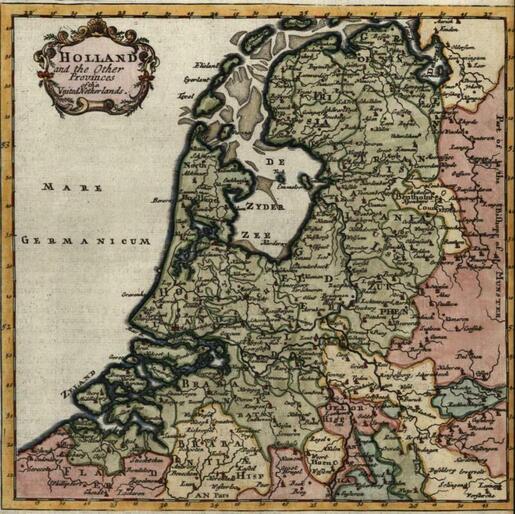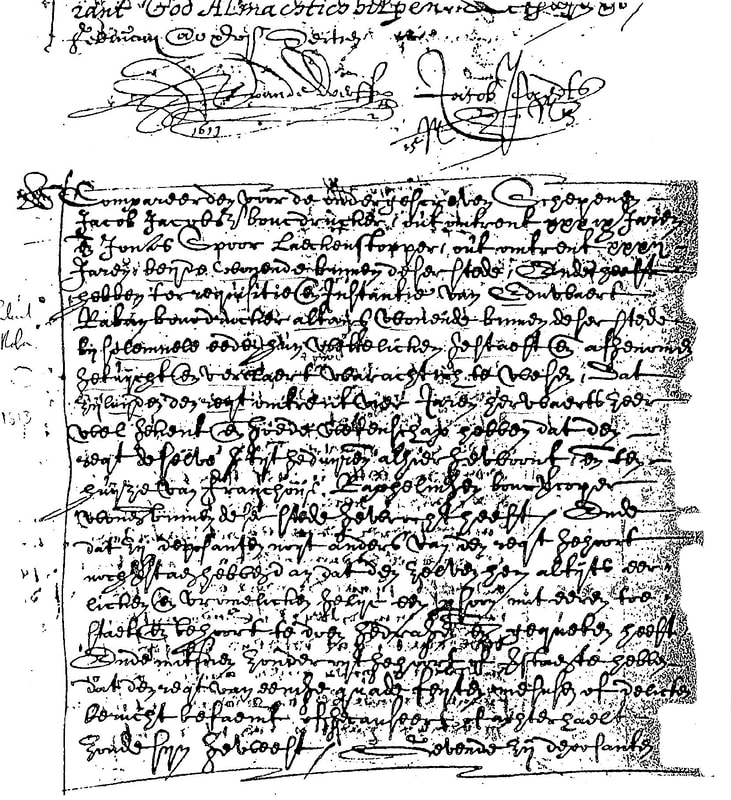|
Edward Raban is an enigmatic figure.
He appears fleetingly in the surviving records of his age, and his life was only pieced together in the nineteenth and early twentieth centuries. These later accounts are, however, incomplete and not always based on solid sources. It is believed that Raban was born in England around 1579 but his ancestry was of German extraction. Raban himself is the source of some of the information about his life. He signs himself in print ‘Edwardus Rabanus, Anglus’. James Gordon, Parson of Rothiemay, who probably knew him, also states that Raban was an Englishman by birth. In some of his other volumes, Raban describes himself as ‘Edward Rabanus, Anglo Britannus, Gente Germanus’ He writes elsewhere about Pope Joan (from Mainz) and refers to her as ‘my native country woman’ meaning Germany.
|
In his Resolutions against Drunkenness, Raban notes ‘…my father's brother Peter Raban is a parson at Melton Mobre in Wooster-shyre of England’. This is incorrect as Melton Mowbray is in Leicestershire and not Worcestershire, and no Raban was ever vicar there.
However, a gentleman called ‘Raven’ was briefly curate at Keysham Chapel in Leicestershire.
However, a gentleman called ‘Raven’ was briefly curate at Keysham Chapel in Leicestershire.
From the same source, his Resolutions against Drunkenness, Raban discusses his involvement fighting in the conflict between the Protestant Netherlands and Catholic Spain:
“I remember that in the year of Christ 1600, there was no small stir in England (especially in and about London) with mustering, pressing, furnishing and sending of Captains and Soldiers into Flanders to assist the estates of the Netherlands, who sent out their forces in the defence of God's quarrel and their own, under the conduct of the most worthy prince and champion, Maurice of Nassau. And at which time also it was my silly fortune to march from London with our English Cavellieroes. But I remember what merry days we had in London before we took shipping, for we made day and night all one, with eating, drinking, playing, swearing”. |
He fought for the Dutch in their religious wars against Spain, taking part in the Battle of Nieuwpoort in July 1600. During the remainder of that decade, he travelled Europe, fought again for the Dutch and, it seems, learned the art of printing in the Low Counties.
Raban appears to have travelled extensively across Europe in the early 1600s. He worked in the printing trade, from at least 1607, as he is recorded in testimonials in archives in both Leiden and Amsterdam.
wel gehert en guede wetensches
[well-tempered and good in knowledge]
Many of the published sources report that Raban was associated with the Pilgrim Press in Leiden between 1616 and 1619. This press was established by William Brewster and Thomas Brewer, two of many English religious exiles living in Leiden. Brewster printed many Puritan books and pamphlets which were smuggled to England. In 1619, the Press printed a volume entitled the Perth Assembly, written by David Calderwood, which criticised the Five Articles of Perth ratified at the General Assembly in 1618 by which King James VI and I attempted to impose episcopacy on the Church of Scotland.. The publication of the book infuriated the King and the Press was forced to shut down. The following year Brewster and many of his fellow Puritans in Leiden left Plymouth on board the Mayflower for America. Raban, meanwhile, was believed to have fled to Scotland
JP Edmond and EG Duff both studied Raban extensively. They concluded that he first arrived in Edinburgh in 1620; where he printed at the sign of the A. B. C, in a house at the Cowgate Port, but left for St Andrews later that year. Edmond ‘regretted that the municipal records of this ancient city are very deficient — those for the years during which Raban worked there are lost’. He left St Andrews for Aberdeen at Whitsun 1622.
< Back to Exhibition homepage |
Raban Revisited > |








